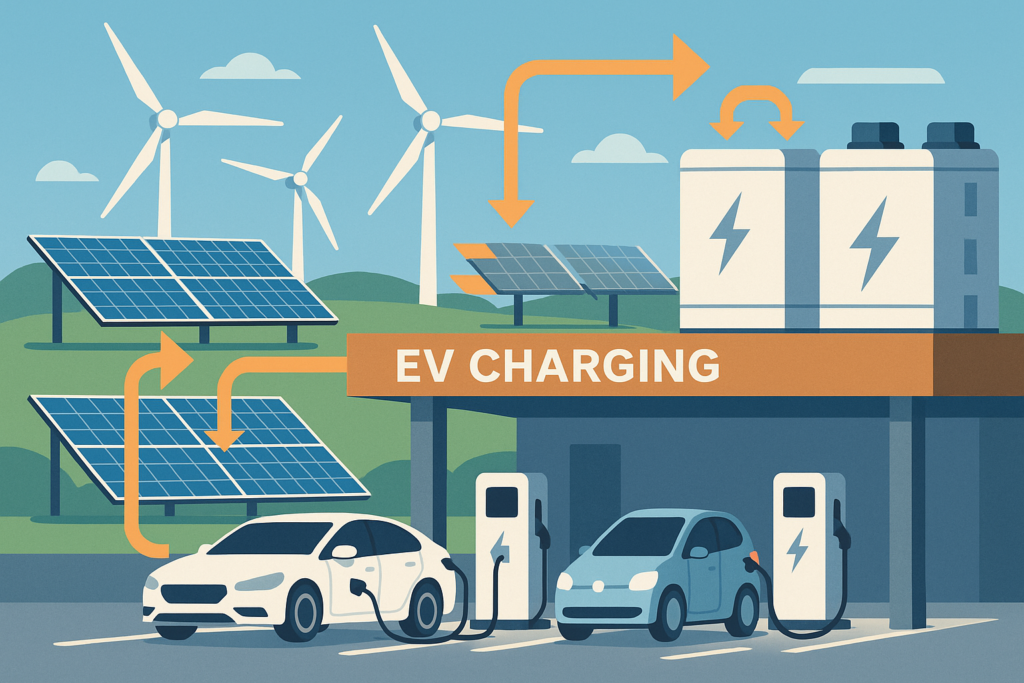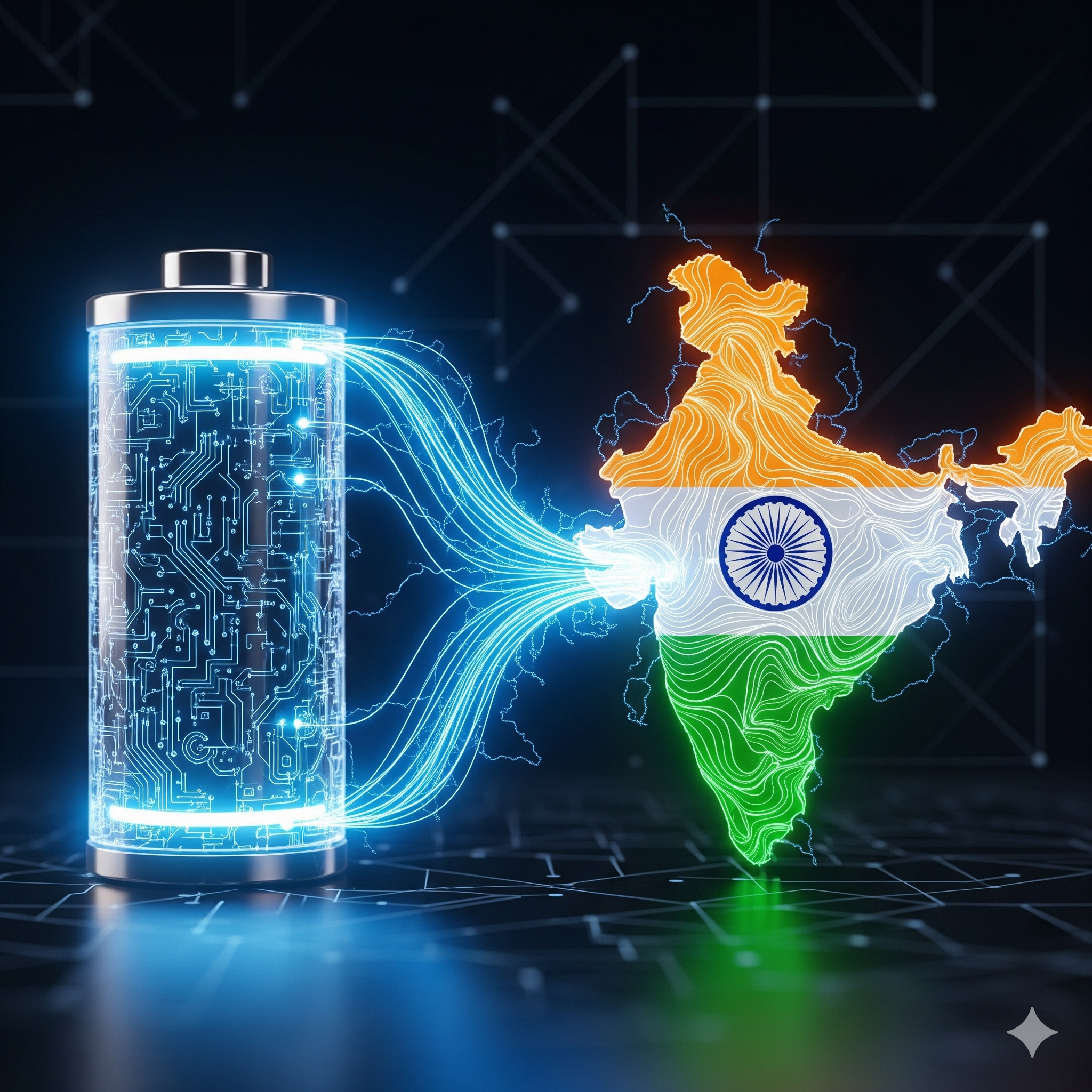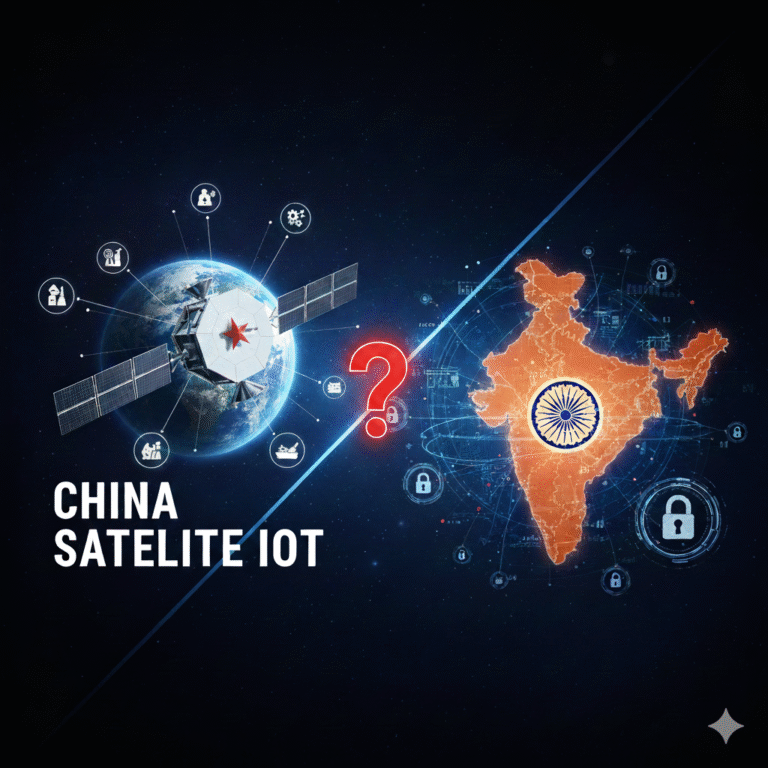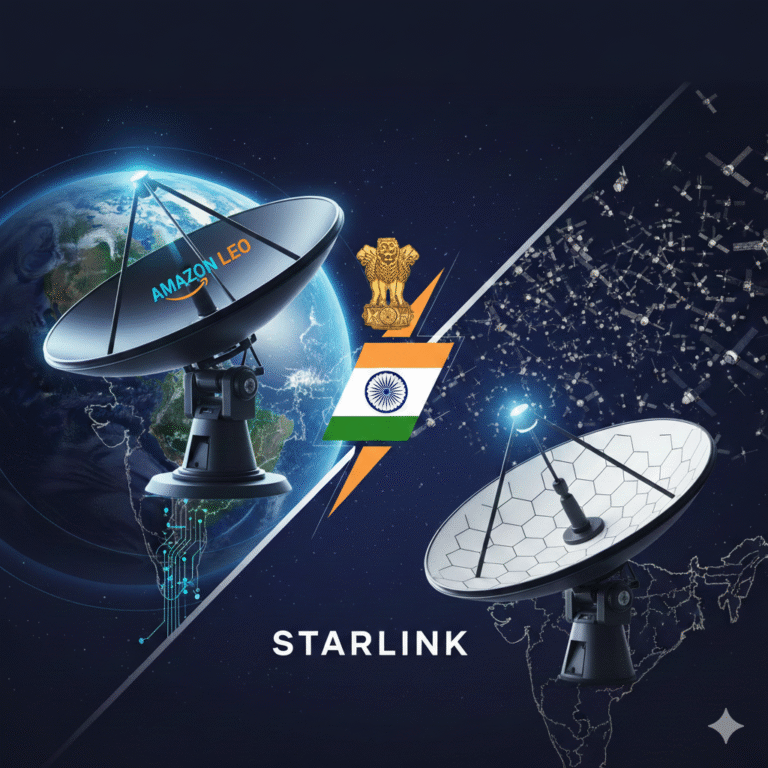Batteries represent energy storage systems critical for EV adoption, renewable integration, and India’s transition to a low-carbon economy. With projected battery demand of 260 GWh by 2030, India faces both unprecedented opportunities and strategic challenges in building domestic manufacturing capabilities while securing critical mineral supplies from global partners including Argentina and Australia.
Key Highlights
- Massive demand projection: India’s battery demand expected to surge 87-fold from 3 GWh in 2020 to 260 GWh by 2030, driven by EV adoption and renewable energy integration. onlinelibrary
- ₹18,100 crore PLI commitment: Government approved Production Linked Incentive scheme targeting 50 GWh domestic ACC manufacturing capacity with major companies like Reliance, Ola Electric, and Rajesh Exports participating
- Strategic mineral partnerships: India securing lithium supplies through Joint Ventures with Argentina’s YPF and Critical Minerals Partnership with Australia to reduce Chinese supply dependency
- ₹15 billion market potential: Annual battery market could exceed $15 billion by 2030, creating over 1 million jobs while reducing oil import bills by ₹2-2.5 lakh crore arxiv
- Technology diversification: Beyond lithium-ion dominance, India investing in solid-state, sodium-ion, LFP batteries, and recycling technologies through startups and research institutions
Global Battery Landscape: China’s Dominance and Strategic Vulnerabilities
China’s Manufacturing Stranglehold
China controls approximately 75% of global battery manufacturing and dominates refining of critical materials including lithium and cobalt.
This supply chain concentration creates strategic vulnerabilities for countries like India pursuing energy transition goals while reducing fossil fuel dependencies.
The Lithium Triangle comprising Chile, Argentina, and Bolivia holds approximately 60% of world lithium reserves, making these Latin American partnerships crucial for India’s energy security. China’s Belt and Road Initiative has already secured significant stakes in these regions, intensifying global competition for critical mineral access.
Geopolitical Mineral Security
India’s strategic response involves diversifying supply sources and building bilateral partnerships. The US-led Minerals Security Partnership (MSP) provides framework for collaboration, with India joining in 2022 to strengthen global supply chains for critical minerals.
Key partnerships include:
- Coal India’s 50:50 JV with Argentina’s YPF for lithium exploration arxiv
- KABIL’s exclusivity rights in Argentina’s Catamarca Province pmc.ncbi.nlm.nih
- Australia Critical Minerals Partnership for lithium and cobalt mining
- Quad clean energy collaboration strengthening Indo-Pacific supply chains ijert
India’s Policy Architecture: Building Domestic Capabilities
Production Linked Incentive (PLI) Scheme Success
The ₹18,100 crore PLI scheme for Advanced Chemistry Cell (ACC) manufacturing represents India’s most ambitious battery initiative. Approved in May 2021, the scheme targets 50 GWh domestic capacity within two-year setup period followed by five-year incentive disbursement.
Major beneficiaries include:
- Reliance New Energy Limited
- Ola Electric Mobility Private Limited
- Rajesh Exports Limited
- Exide Industries Limited (6 GWh)
- Amara Raja Batteries Limited (12 GWh) arxiv
The technology-agnostic approach allows beneficiary firms to choose suitable advanced technologies while ensuring globally competitive manufacturing costs.
Battery Swapping Policy Framework
India’s Battery Swapping Policy (2022) focuses on interoperability standards and infrastructure development.

This innovative approach addresses charging time concerns and battery ownership models particularly relevant for commercial vehicle segments.
Key policy elements:
- Standardized battery specifications across manufacturers
- Swapping station infrastructure guidelines
- Battery-as-a-Service (BaaS) business models
- Safety and certification protocols
National Mission Integration
National Mission on Transformative Mobility & Battery Storage coordinates with complementary policies including:
- FAME-II Scheme: ₹10,000 crore for EV adoption subsidies
- National Green Hydrogen Mission: Grid balancing through hydrogen-battery integration
- 500 GW renewable energy target by 2030 requiring massive storage deployment
Technology Innovation Landscape: Beyond Lithium-Ion
Lithium Iron Phosphate (LFP) Advancement
LFP batteries offer enhanced safety and longer lifecycle compared to traditional NMC chemistries. Indian companies including Ola, Exide, and Amara Raja are investing heavily in LFP manufacturing capabilities for automotive applications.
LFP advantages:
- Thermal stability reducing fire risks
- Lower material costs avoiding expensive cobalt
- Longer cycle life exceeding 3,000-5,000 cycles
- Better performance in Indian climatic conditions
Solid-State Battery Research
Solid-state batteries promise higher energy density and faster charging through solid electrolyte technology. Indian startups and IIT research programs are developing indigenous capabilities in this next-generation technology.
Research initiatives include:
- IIT collaborations with international partners
- Startup ecosystem development through government funding
- Industry-academia partnerships for technology transfer
- Pilot manufacturing facilities for proof-of-concept
Sodium-Ion Alternative Chemistry
Reliance’s acquisition of Faradion demonstrates strategic investment in sodium-ion technology as lithium alternative. Sodium’s abundance and lower cost make it attractive for stationary storage applications where energy density is less critical.
Sodium-ion benefits:
- Abundant raw materials reducing supply constraints
- Lower environmental impact in mining and processing
- Cost advantages for large-scale deployment
- Temperature resilience for Indian operating conditions
Economic Impact and Market Dynamics
Job Creation and Economic Value
Battery sector development could create over 1 million jobs by 2030 across manufacturing, research, and services. The ₹15 billion annual market includes approximately ₹12 billion from cells and ₹3 billion from pack assembly.
Employment distribution:
- Manufacturing operations: Direct employment in gigafactories
- R&D activities: High-skilled jobs in technology development
- Supply chain services: Logistics and material handling
- Recycling operations: Circular economy jobs
Cost Trajectory and Competitiveness
Battery prices have declined dramatically from $1,200/kWh in 2010 to less than $130/kWh in 2023, with targets below $60/kWh for grid-scale applications. Indian manufacturing must achieve cost parity while ensuring quality standards.
Cost reduction drivers:
- Scale economies through gigafactory deployment
- Technology advancement improving energy density
- Supply chain localization reducing import dependencies
- Recycling integration lowering raw material costs
Recycling and Circular Economy Opportunities
Battery Recycling Market Potential
India’s battery recycling sector offers 25-30% cost reduction potential through material recovery. Companies like Attero and Lohum are emerging leaders in battery recycling technologies addressing end-of-life management.
Circular economy benefits:
- Critical material recovery reducing import dependence
- Environmental impact mitigation from proper disposal
- Economic value creation through secondary material markets
- Job creation in recycling operations
Second-Life Battery Applications
Retired EV batteries retain 70-80% capacity suitable for stationary storage applications. Second-life programs extend battery value while reducing waste and supporting grid storage requirements.
Applications include:
- Residential energy storage for solar integration
- Commercial backup power systems
- Grid stabilization services
- Rural electrification projects
Environmental and Ethical Considerations
Sustainable Mining Practices
Lithium mining is water-intensive and environmentally challenging, particularly in water-scarce regions like Chile’s Atacama Desert. India’s partnerships must prioritize sustainable extraction and community engagement in mining operations.
Ethical sourcing concerns:
- Cobalt mining linked to child labor in Democratic Republic of Congo
- Community displacement in lithium extraction areas
- Water resource competition in mining regions
- Environmental degradation from improper mining practices
Battery Passport Implementation
Supply chain traceability through battery passports enables ethical sourcing verification and lifecycle tracking. Digital documentation covers material origins, manufacturing processes, and performance parameters ensuring responsible production.
Integration with Energy Transition Goals
EV Adoption Acceleration
Electric vehicles are expected to drive 40% of battery demand by 2030. Two-wheelers garnering maximum share with CAGR of ~50% over FY22-30 in EV sales growth.
Market segments:
- Two-wheelers: Largest volume with affordable battery solutions
- Commercial vehicles: Heavy-duty applications requiring fast charging
- Passenger cars: Premium segment driving technology advancement
- E-buses: Public transportation electrification
Renewable Energy Integration
Grid-scale storage enables higher renewable penetration by addressing intermittency challenges. India’s 500 GW renewable target requires substantial storage deployment for grid stability and energy security.
Storage applications:
- Solar-plus-storage for 24/7 clean power
- Wind energy smoothing and peak shaving
- Frequency regulation and grid balancing
- Transmission deferral reducing infrastructure costs
Future Roadmap and Strategic Priorities
Technology Development Focus
India must invest in next-generation technologies while scaling current solutions. Research priorities include solid-state batteries, advanced recycling, and alternative chemistries for diverse applications.
Innovation ecosystem requirements:
- Increased R&D funding for battery technologies
- Industry-academia partnerships for technology transfer
- Startup incubation programs for emerging technologies
- International collaboration for knowledge sharing
Supply Chain Resilience
Diversifying supply sources and building domestic capabilities reduces geopolitical risks while ensuring cost competitiveness. Strategic stockpiling and bilateral agreements enhance supply security.
Resilience strategies:
- Multiple supplier relationships across different countries
- Domestic processing capabilities for imported materials
- Technology partnerships reducing single-source dependencies
- Emergency reserves for strategic materials
Conclusion
Batteries represent a transformational technology enabling India’s transition to a sustainable, low-carbon economy. The 260 GWh demand projection by 2030 creates unprecedented opportunities for domestic manufacturing, job creation, and economic growth while supporting climate commitments.
Success requires coordinated efforts across policy frameworks, international partnerships, technology development, and supply chain resilience. The ₹18,100 crore PLI scheme provides strong foundation but sustained investment in R&D and infrastructure remains critical.
Strategic partnerships with Argentina, Australia, and other mineral-rich countries offer pathways to supply security while reducing Chinese dependencies. Technology diversification beyond lithium-ion through sodium-ion, solid-state, and recycling innovations enhances long-term competitiveness.
The integration of batteries with EV adoption, renewable energy deployment, and grid modernization creates synergistic benefits supporting India’s energy security and environmental goals. Circular economy approaches through recycling and second-life applications maximize resource efficiency while minimizing environmental impact.
India’s battery revolution is not merely about energy storage—it represents a comprehensive transformation of the energy ecosystem enabling sustainable development, economic growth, and global leadership in clean technologies.
📝 Mains Practice Questions
- Discuss the role of advanced battery technologies in achieving India’s renewable energy targets.
- “Battery storage is the backbone of India’s clean energy transition.” Examine in the context of critical minerals and manufacturing ecosystem.









+ There are no comments
Add yours